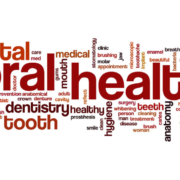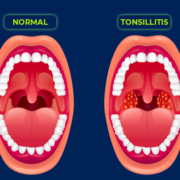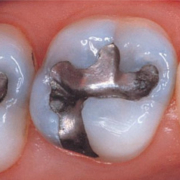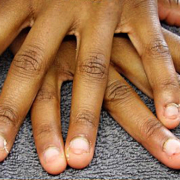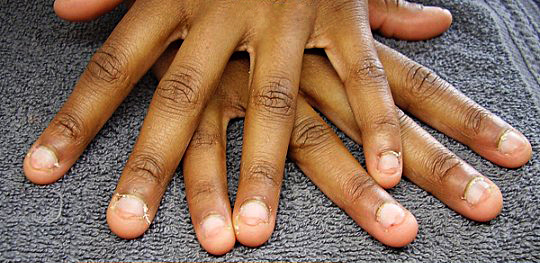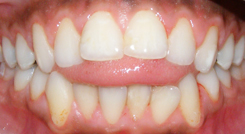Dental caries and worms. I remember the general consensus that worms were the malevolent beings responsible for devouring our precious teeth, leaving behind unsightly holes. Even now, this notion continues to linger in the minds of many. However, it’s time to set the record straight.
Worms aren’t the culprits because the reality is more nuanced than that! In this article, we enlighten you about the true origins of cavities and equip you with the knowledge of caries to effectively address them. Let’s embark on this journey of understanding together. Dental caries, tooth decay or cavities, are permanently damaged areas in the hard surface of your teeth that develop into tiny openings or holes. This is a a step by step process of how dental caries develop
Origins of dental caries: a step by step
- Bacterial (“worm”) Activity: Within our mouths reside bacteria that thrive on the carbohydrates present in sugary and starchy foods and drinks. Indulgences like bread, sodas and juice provide a feast for these bacteria. They eat and excrete acids.
- Plaque Formation: The amalgamation of bacteria, acid, food particles, and saliva gives rise to a sticky substance known as plaque. It adheres to the surface of our teeth, providing a conducive environment for bacteria to flourish.
- Enamel Erosion: If we fail to practice proper brushing and flossing, the acids in plaque gradually erode the protective enamel of our teeth, resulting in the formation of cavities or small holes.
- Progression to Deeper Layers: Without timely intervention, cavities continue to grow, penetrating deeper layers of the teeth. This can lead to severe toothache, infection, and even tooth loss if left untreated.
Risk Factors for Dental Caries: 10 Factors to Consider
While cavities can affect anyone with teeth, certain risk factors increase the likelihood of their development. By understanding these factors, you can take proactive measures to safeguard your oral health:
- Dietary Habits: Foods that linger in the mouth for extended periods, such as sugary drinks, pose a higher risk of decay compared to those easily washed away by saliva.
- Frequent Snacking or Sipping: Regular snacking or continuous consumption of sugary drinks provides a constant supply of carbohydrates, fueling oral bacteria, and increasing acid production and tooth erosion.
- Bedtime Infant Feeding: Putting babies to bed with bottles containing sugary liquids like milk or formula contributes to baby bottle tooth decay.
- Inadequate Oral Hygiene: Failing to brush and floss adequately allows plaque to accumulate rapidly, initiating the early stages of decay.
- Insufficient Fluoride: A lack of exposure to fluoride, a key component in cavity prevention and the reversal of early tooth damage, raises the risk of developing caries. Fluoride is commonly found in public water supplies, toothpaste, and mouth rinses.
- Age: Cavities are prevalent in young children and teenagers, while older adults also face an elevated risk.
- Dry Mouth: Certain medications, medical conditions, radiation to the head or neck, or specific chemotherapy drugs can reduce saliva production, increasing the risk of cavities.
- Worn Fillings or Dental Devices: Over time, dental fillings can deteriorate, develop rough edges, or weaken, creating an environment conducive to plaque accumulation.
- Heartburn: Gastroesophageal reflux disease (GERD) or chronic heartburn can introduce stomach acid into the mouth, eroding tooth enamel and causing significant dental damage.
- Eating Disorders: Conditions like anorexia and bulimia can lead to tooth erosion and cavities due to frequent exposure to stomach acids.
These risk factors, along with other influences like diet, oral hygiene practices, saliva production, age, genetic predisposition, geographic location, and socioeconomic status, collectively contribute to the occurrence of cavities.
Signs and Complications out of dental caries: What to Watch Out For
Signs
Recognizing the signs of cavities is crucial for timely intervention. By staying vigilant, you can address the issue before it escalates. Here are some common indicators to watch out for:
- Bad breath or unpleasant taste in the mouth
- Bleeding gums
- Facial swelling
- Toothache
- Sensitivity to hot or cold foods and beverages
Failure to address dental caries can result in various complications, including:
- Pain: Cavities can cause significant toothache, leading to discomfort and difficulties in daily activities.
- Tooth Abscess: Advanced decay can lead to the formation of an abscess, characterized by swelling and the presence of pus around the affected tooth.
- Damage or Broken Teeth: Untreated cavities can weaken the tooth structure, making them susceptible to fractures and breakage.
- Chewing Problems: Severe decay can impair the ability to chew properly, impacting overall nutrition and well-being.
- Shifting of Teeth: Tooth loss resulting from untreated cavities can cause neighboring teeth to shift, leading to bite misalignment and potential orthodontic issues.
- Negative Impact on Quality of Life: Persistent pain, tooth loss, and compromised appearance can affect confidence, self-esteem, and overall quality of life.
- Infection: In rare cases, a tooth abscess can lead to severe infections, including potentially life-threatening complications.
Management of dental caries: A Multifaceted Approach
Managing rampant caries necessitates a comprehensive approach that considers various goals, treatment strategies, and preventive measures. By adopting the following strategies, you can effectively address the issue:
- Detecting Initial Lesions: Early detection of carious lesions allows for prompt intervention and prevents further progression.
- Caries Activity and Risk Assessment: Determining the activity of carious lesions and assessing an individual’s risk factors for developing new caries helps tailor the treatment approach.
- Non-Invasive Procedures: Instead of removing dental tissue, non-invasive procedures such as remineralization, biofilm removal, and sealing should be employed initially to manage existing caries. These measures aim to arrest or control cavitated lesions through minimally invasive approaches.
- Invasive Treatments: Invasive treatments are recommended for cavitated lesions visible in the dentin
The prognosis for individuals with rampant caries depends on various factors, including the severity of decay, timely intervention, and adherence to preventive measures. By receiving regular dental checkups and appropriate treatments to stop tooth decay in its early stages, most people with cavities can avoid long-term problems. However, if tooth decay reaches the root, there is a risk of tooth loss or the development of a painful abscess. In this case, root canal therapy is needed to save the tooth.
Untreated tooth decay can lead to extensive tooth loss and the need for extraction. Advanced decay can cause severe infections inside the tooth and under the gums, which can spread throughout the body and, in rare cases, become fatal.
Prevention of dental caries: Safeguarding Your Oral Health
Preventing cavities is crucial for maintaining good oral health. Here are some general tips follow:
- Brush your teeth at least twice a day with fluoride-containing toothpaste, ideally after every meal. Use floss or an interdental cleaner to clean between your teeth.
- Rinse your mouth with a fluoride mouth rinse if your dentist thinks you’re at high risk of developing cavities.
- Visit your dentist regularly for professional teeth cleanings and oral exams.
- Consider dental sealants for your back teeth. These are plastic coatings that seal off grooves and crannies, protecting your teeth from plaque and acid.
- Drink tap water, which often contains fluoride that can significantly reduce tooth decay.
- Avoid frequent snacking and sipping, as this allows bacteria in your mouth to create acids that destroy tooth enamel.
- Eat tooth-healthy foods and avoid foods that get stuck in your teeth for long periods. Fresh fruits and vegetables increase saliva flow, while unsweetened coffee, tea, and sugar-free gum help wash away food particles.
- Consider fluoride treatments or custom trays if you aren’t getting enough fluoride through your drinking water and other sources.
- Ask your dentist about antibacterial treatments if you’re especially vulnerable to tooth decay.
- Chewing xylitol-based gum, prescription fluoride, and an antibacterial rinse can help reduce the risk of cavities.
In conclusion, managing caries requires a comprehensive approach that involves accurate diagnosis, appropriate treatment strategies, and preventive measures. Remember to consult your dentist for personalized advice and guidance tailored to your specific needs. Together, we can pave the way for a future of healthier, happier smiles.


